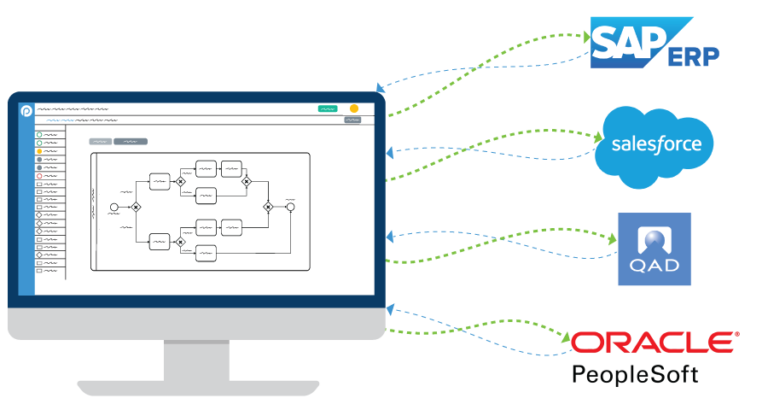Master data management allows organizations to improve the quality and consistency of their key data assets, including customer data, geographic data, product info, and asset data. In fact, master data management (MDM) enables companies to create a single master reference for vital data sources. As a result, this leads to fewer errors while also reducing redundancy.
Master data is the critical business data covering people, places, products, and other things. Master data allows companies to better understand core entities, such as customers and suppliers. With this data in hand, companies can make data-informed decisions.
In addition, master data software and solutions facilitates more precise definitions and categories. This allows organizations to better organize and define their data. Proper MDM solutions also increase flexibility and allow companies to put data to use more quickly. Keep reading to learn more.
Examine the 6 different data types that make up master data
In order to better understand master data it helps to break the concept down. We can identify at least six different types of data commonly used by companies and other organizations listed below:
Transactional Data: One of the most important data types for many organizations is transactional data. This can refer to invoices, deliveries, sales, returns, trouble tickets, claims, and more. Whenever a transaction occurs, data is generated and can be tracked.
Metadata: Many IT systems and other solutions generate metadata, such as xml documents, database column descriptions, log files, and the like.
Reference Data: This data is often used to relate to and utilize data and information that extends beyond the organization itself. For example, a company may monitor exchange rates, government policies, and the like.
Hierarchical Data: This data shows and tracks the relationship between data. Hierarchical data may form an accounting system and may also provide descriptions of real world relationships, such as a company flow chart. Some consider hierarchical data as a super MDM domain since it is critical for both discovering and understanding the relationship between different data.
Unstructured Data: Unstructured data does not adhere to a predefined model or is not organized in a pre-defined manner. Often, this data is text heavy and can include documents, emails, PDFs, and more.
Master Data: This is the data that forms the data core within a company. While master data is not transactional, it can describe and measure transactions. Often, master data is broken into these categories:
- Customer data, including consumers, employees, and salespersons.
- Products, including stores, parts, assets, and the products themselves.
- Locations, including facility locations and geographic divisions.
- Other key data, including contracts, warranties, and the like.
Many organizations divide data further into sub-domains. For example, a company could divide customers into normal and premiere customers. Likewise, companies may use multiple criteria, such as customers in a specific geographical location that buy a certain product.
Managing master data
Many different informational components could be considered “master data.” However, not all data that can be incorporated into master data should actually be included. Including too many data points may result in overload. Instead, companies should focus on a smaller portion of data that is particularly valuable. Things commonly managed as master data may include:
- CRUD (lifecycle) data
- Lifetime
- Behavior data
- Cardinality
- Votility
- Value
- Reuse
Deciding what should be treated as master data is one of the most challenging aspects of master data management. Further, data that doesn’t comply with the above definition of master data may still need to be treated as such.
Why managing master data is so important
Master data is critical for many companies and should be carefully managed. With proper management, the risk of errors is reduced. Since many different applications and functions rely on master data, a mistake in the data itself can cause problems elsewhere. For example, incorrect pricing in the master data could cause problems at retail locations across the country.
Additionally, MDM allows companies to utilize tools, software, and expertise to improve the quality and accuracy of data and to coordinate efforts across the company and also with outside parties, such as suppliers. Invariably, MDM empowers companies, helping them understand their own operations, markets, and customers.
Master data allows companies to create a point of reference for critical data. This can reduce redundancies, thus lowering costs, and eliminate conflicting data. If a supplier changes their contact information, for example, moving into a new facility at a different address, updated master data will ensure that everyone in your organization can find the latest contact information.
Does my business need MDM?
Many companies – large and small – now use a variety of applications and tools (i.e. CRM, PoS) to collect and compile data. However, it’s easy for this data to become disorganized and fragmented. This makes it harder to use the data and to make informed decisions. Companies that don’t manage their data often struggle to answer even straightforward questions, such as which customers are most profitable.
Here are six key principles to help build a strong MDM program:
- Governance: Directives to manage policies, principles, and organizational bodies.
- Policy: The requirements and standards that the MDM must follow.
- Organization: Getting the right people, such as data stewards, in the right places.
- Measurement: How is your company performing in relation to outlined goals?
- Process: Lays out processes across the data lifecycle.
- Technology: Includes the master data hub and tools.
Usually, companies start small and then expand, adding more data and tools. This allows the company to grow in a sustainable, manageable way. Here is a simple checklist to start:
- Identify master data sources, producers, and consumers.
- Collect and analyze the data.
- Appoint data stewards and implement a data governance program.
- Choose data tools and solutions.
- Develop a master data model.
- Set up a maintenance system.
Developing a master data management program is complex but increasingly vital for companies. With proper planning and the right talent, organizations can set up a data management system that will empower staff and partners.
Take away: Master Data Management is vital
Companies are growing in size and complexity, which enables economies of scale and can generate a huge amount of data. However, with increased size and scope comes heightened complexity. At times, the amount of information flowing in and through a company can seem overwhelming. Nonetheless, with proper master data management, companies can reduce the complexities and make data-driven decisions.
Apply Good Governance to Master Data
ProcessMaker offers a unique set of technology and functionality that makes it ideal for maintaining and managing your company’s master data. Add appropriate approvals and keep full audit trails around the lifecycle of your master data. View our product for Master Data Management





